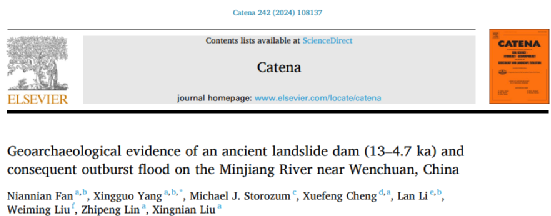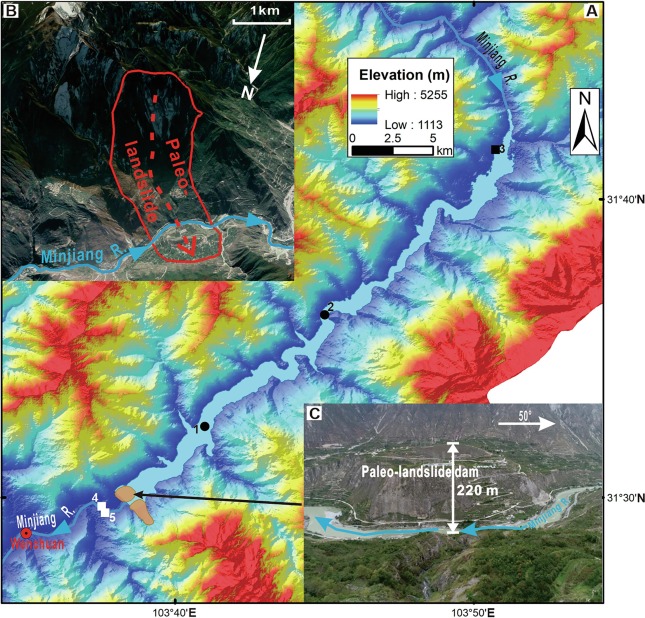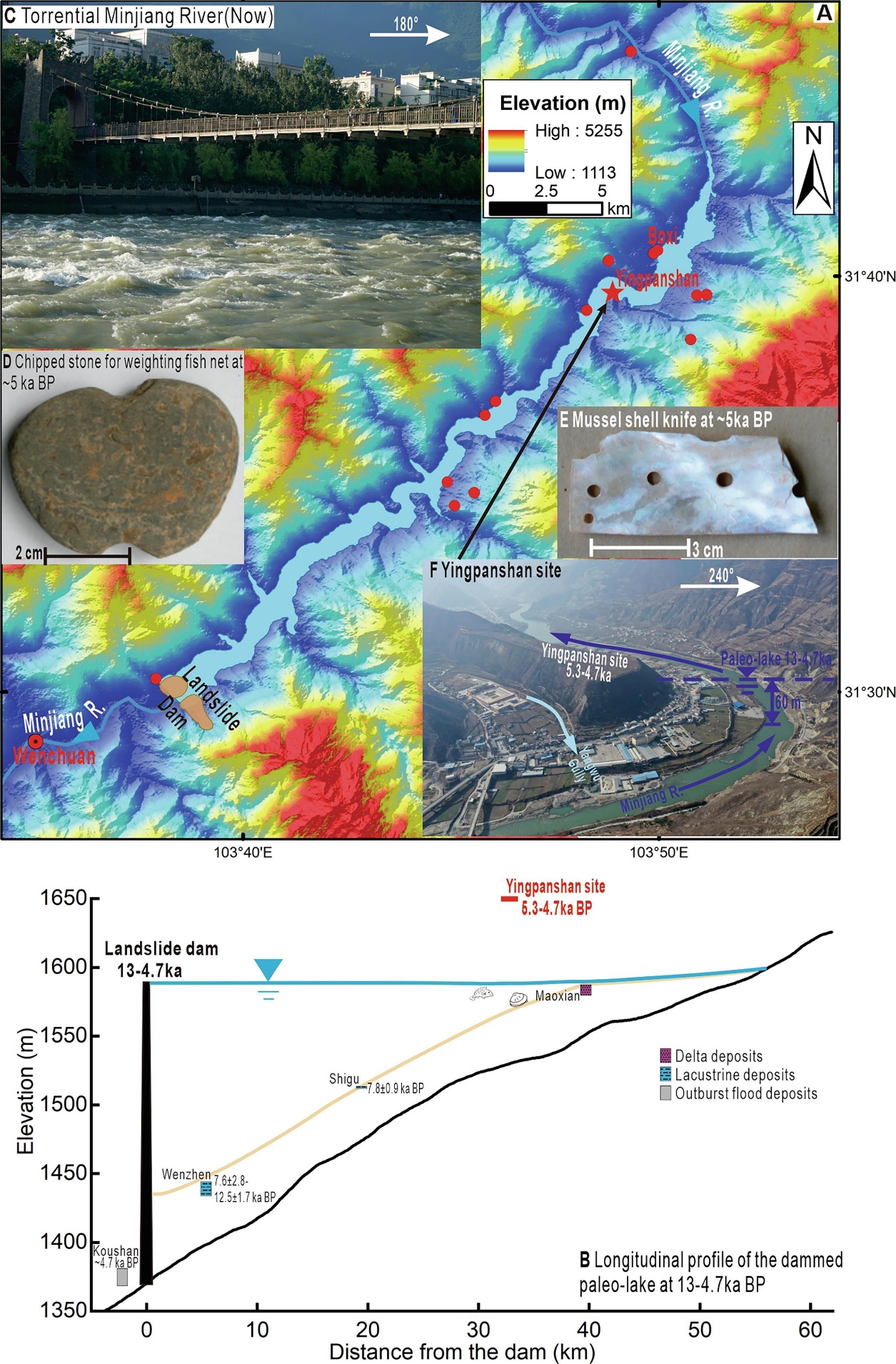Center for Archaeological Science, Sichuan University has made significant progress in the study of ancient landslide dams in Wenchuan.
Recently, the Center for Archaeological Science, Sichuan University published its latest research results in the internationally renowned journal Catena, titled Geoarchaeological evidence of an ancient landslide dam (13鈥�4.7 ka) and consequent outburst flood on the Minjiang River near Wenchuan, China. Through the perspective of studying ancient landslide dams in Wenchuan, it provides new insights into exploring the survival and development of ancient populations at sites such as Yingpanshan in the upper reaches of the Minjiang River, as well as the spread and formation of Neolithic cultures in the Sichuan Basin.

The 5路12 Wenchuan earthquake and natural disasters such as landslide dams in 2008 were shocking. Wenchuan and its surrounding areas are earthquake-prone zones with steep terrain, and major earthquakes and corresponding secondary disasters often occurred in this area during prehistoric times. Through the investigation of residual landslide dams on the main stream of the Minjiang River in Wenchuan, downstream outburst flood sediments, and upstream lacustrine sediments, the study reconstructed the Minjiang Wenchuan ancient landslide dam sediments from 13,000 to 4,700 years ago. The landslide dam was over 200 meters high, with a backwater length of more than 50 kilometers. The maximum flood discharge during the outburst exceeded 20,000 cubic meters per second, which is 7 times the maximum measured rainstorm flood in the current river section. The outburst flood hardly attenuated its potential energy in the 90-kilometer canyon section downstream, but showed a rapid attenuation trend after flowing through the current Dujiangyan area and entering the Chengdu Plain.

The western Sichuan Plateau is located in the core area of the Tibetan-Yi Corridor, and has been an important passage for population migration and cultural exchange since ancient times. The Yingpanshan site in the upper reaches of the Minjiang River is an important Neolithic cultural site in the upper reaches of the Yangtze River for five thousand years. The Yingpanshan culture inherited the Majiayao culture tradition from the upper reaches of the Yellow River and had an important impact on the Baodun culture in the Chengdu Plain. The current Yingpanshan site is located on a terrace on the left bank of the Minjiang River, about 100 meters above the river surface. Fishing and hunting remains unearthed from Yingpanshan and surrounding sites seem to be quite different from the current turbulent river and the Minjiang River, which has relatively few fish breeding. The study of ancient landslide dams in this paper can well explain this problem. It should be said that the formation of ancient landslide dams and human activities on the lakeshore formed more than ten cultural sites such as Yingpanshan. In addition, the era of the disappearance of the ancient landslide dam is coupled with the era of the decline of the Yingpanshan remains. It should be said that the disappearance of the ancient landslide dam to a certain extent affected the lifestyle of the Yingpanshan culture population and promoted the migration of some Yingpanshan ancestors to the Chengdu Plain, which in turn promoted the subsequent formation of the Baodun culture in the Chengdu Plain.

The disaster effects of landslide dams have attracted widespread attention from scholars. Studies have shown that if landslide dams can provide a relatively stable and long-term living environment for the surrounding areas after their formation, they will also become important places for ancient human survival and reproduction. In addition, the impact of climate change on the evolution of human civilization deserves attention. In geological disaster-prone areas such as the upper reaches of the Minjiang River, the impact of geological disasters and other factors on the evolution and replacement of human civilization should also be re-examined.
This achievement is a new scientific research attempt by the Geosciences Archaeology Laboratory of the Center for Archaeological Science, Sichuan University, based on the rich archaeological resources in Southwest China, giving full play to the multidisciplinary advantages of Sichuan University, focusing on cutting-edge archaeological science issues such as the migration and flow of ancient humans and human-land relationships in Sichuan and its surrounding areas, and carrying out multidisciplinary collaborative innovation. This research was supported by the Second Qinghai-Tibet Plateau Scientific Expedition Project (2019QZKK0204) and the Open Project of the Center for Archaeological Science, Sichuan University (23SASA04).
See the full text of the paper at https://www.sciencedirect.com/science/article/pii/S0341816224003345?via%3Dihub
